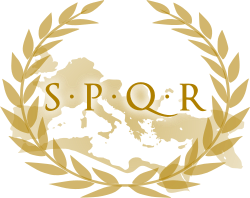Background
The historian Jochen Bleicken credits Theodor Mommsen with introducing the concepts of Principate and Dominate into the literature to periodise the Roman Imperial era.
Based on lecture notes of Sebastian and Paul Hensen in Mommsen's lectures (1882-6) and that were published posthumously as part of his History of Rome , Mommsen explains the concept as follows:
[MH.III, 1] The era of Diocletian bears the mark of decline, and does not attract our sympathy. The significance of this era, however, is all the greater because of this very decline and the paucity of intellectual resources at its disposal. The dominate of Diocletian and Constantine differs sharply from the principate's position, the Republic. The oriental ruler provides the model for the dominate. Whereas the unity of the Empire prevailed under the principate, the division of the Empire prevailed under the dominate. The nationalities divided into a Greek and Latin half. Whereas the principate had been Latin-Greek, the dominate was Greek-Latin. There was a different capital city; Italy loses its privileged status, and there is a complete reform of the administration. The military machines turns into an effective and mobile one; the principate had only frontier troops. Foreigners now join the army, above all Germans. An effective finance administration also develops and Constantine reintroduces the universally current gold coin, the Solidus. A new religion emerges which, although not exactly Christian, nevertheless still differs from that of the principate.
Mommsen continued the distinction in [MH.III, 8]:
There was increased emphasis on the title Augustus, since the old tripartite title highlighted the magisterial nature of the Emperor's position. The title Pius felix made an early appearance and was already imbued with supernatural overtones. Later there was frequent use of the titles perpetuus Augustus and semper Augustus (forever Augustus). The word dominus, which initially denoted slave-owners, became a new title for the Emperor, as well as for a god. Throughout the entire principate this title vied with the legitimate one; even the earlier Emperors had difficulty fending off adulation of this kind. Gradually the dominate prevailed. Domitian was already a key figure in the process. In the third century this way of addressing the Emperor began to gain ground. The coins are an expression of official power: in the reign of Aurelian the title dominus first appeared on coins, combined with deus: domino et deo nato - born to be lord and god. We might supplement this with: servi et cives Romani - Roman citizens born to be slaves. From then onwards it appeared more frequently on coins, especially in the case of the other Emperors, but still the Emperor did not style himself as such until the era of Constantine. This marks another victory for the Greek element: among the Greeks deification of the living is as ancient as monarchy itself. The ceremony of adoration was a practical application of this; people shook hands with the earlier Emperors, or kissed them, like other distinguished persons. Diocletian introduced genuflection. This, too represented a move closer to the oriental idea. It aroused opposition in Rome. The idea of the Emperor as a deity could not be reconciled with Christianity: the idea of the god on earth was abandoned, the lord on earth remained.
Historiography
Theodor Mommsen's Dominate was based on constitutional law, with the idea that there was a change in the power of the emperor as embodied with the concept of nomos empsychos . [4] Historians described the Dominate as the foundation of the Pan-European government of bureaucratic absolute monarchy, in stark contrast to the laissez-faire and economic self-determination of the individual under the republic and the Principate.
In 1978, Bleicken disputed this interpretation and calls the division of imperial rule between principate and dominate as not based on any constitutional change, and that both terms are unsuitable for periodisation. That it was used to show a comparison to the oriental Persian court to make it "un-Roman" and separate the history from Greco-Roman Antiquity. Bleicken further asserts that Mommsen's perspective was influenced less by the Romans themselves and more by the socio-political climate of the 18th and 19th centuries. During those times, citizens emerged from the rule of Napoleon and other despots, where people's perceived their freedoms contrasting sharply with the freedoms of earlier eras. Markéta Melounová's analysis of judicial trials in 2012, specifically the punishment of religious and political crimes, found that they did not differ much in the periods of the Dominate and the Principate.
The Oxford Classical Dictionary regards Dominate as a near-obsolete term. [10]
This page is based on this
Wikipedia article Text is available under the
CC BY-SA 4.0 license; additional terms may apply.
Images, videos and audio are available under their respective licenses.
